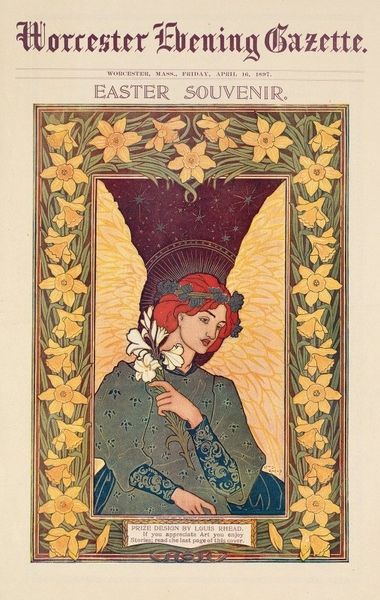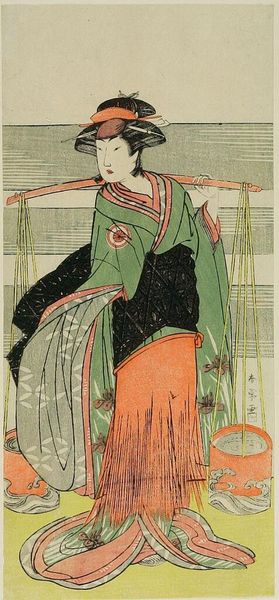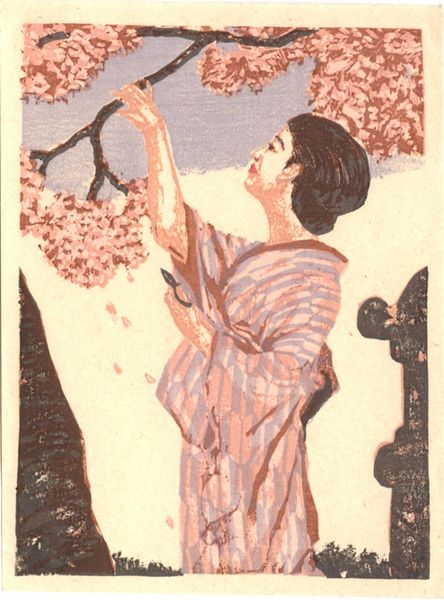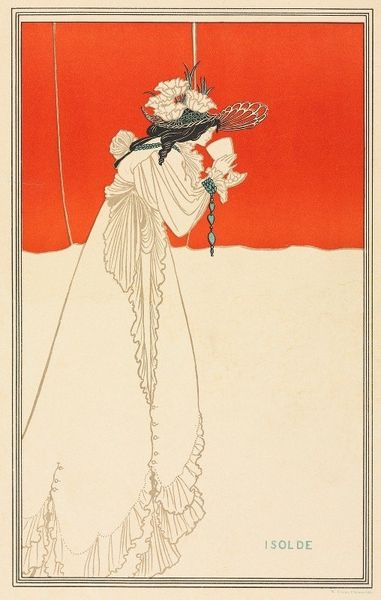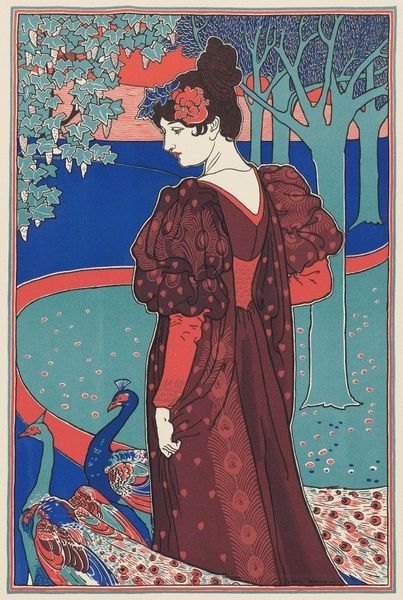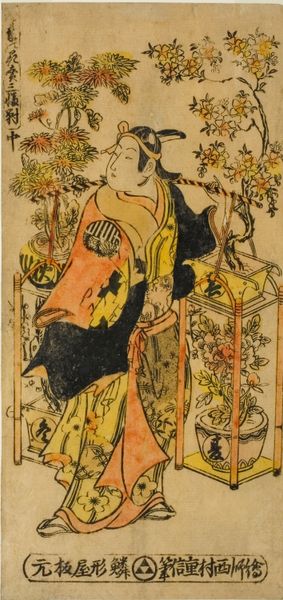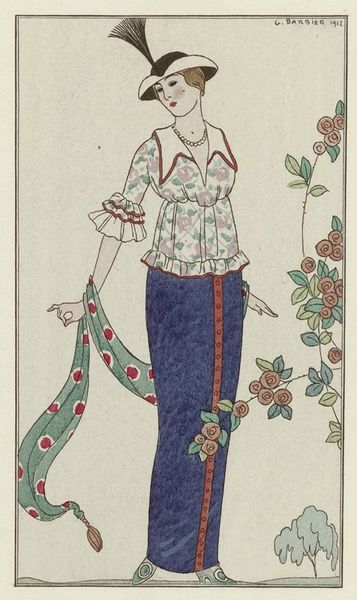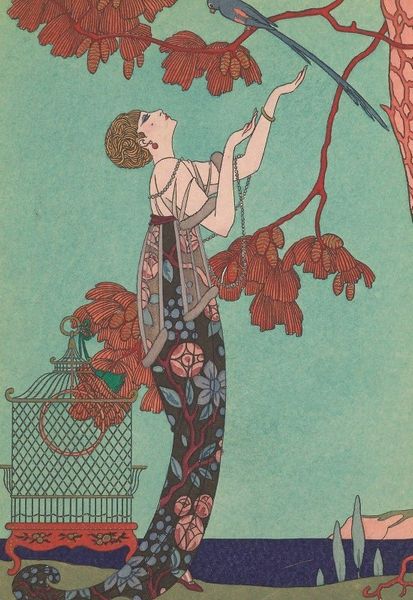
mixed-media, print, poster
#
portrait
#
mixed-media
#
art-nouveau
# print
#
caricature
#
figuration
#
poster
Copyright: Public Domain: Artvee
Editor: So, this poster is called "Salon des Cent," made in 1897 by Louis Rhead. It's a mixed-media print, and what strikes me is the way he uses color and the stylized figure. How does this fit into the art of the late 19th century, in your view? Curator: This piece really captures the spirit of the poster craze in Paris at the time. The Salon des Cent was a venue showcasing innovative posters, and Rhead, though an American artist, participated in that vibrant print culture. These posters weren't just advertisements; they became collectible art. What political function may these images provide? Editor: That's interesting. I hadn't thought about it as more than decoration. Does the image of the woman as an artist signify anything specific about the social status or roles of women at the time? Curator: Absolutely. This was a period when the “New Woman” image was emerging, challenging traditional roles. Showing her as an artist, holding her own tools and palette, suggests a progressive and empowered identity that aligned with the shifting socio-political landscape of women participating in culture. Can we consider posters in general as 'democratic' art of this era? Editor: That makes a lot of sense! Considering the accessibility of posters versus, say, paintings exhibited in private galleries, it does seem to point to that democratizing effect, at least visually and thematically. It’s like art entered the public sphere in a completely new way. Curator: Precisely! Mass production enabled wider access, changing art's role in society. We might also consider the commercial and nationalistic dimensions that go hand-in-hand with this boom. It goes way beyond aesthetic enjoyment. Editor: Wow, seeing it like that shifts my whole understanding. It is much more complex than just a pretty picture. Curator: Exactly! History often lurks beneath seemingly simple aesthetics, waiting to be unearthed.
Comments
No comments
Be the first to comment and join the conversation on the ultimate creative platform.
